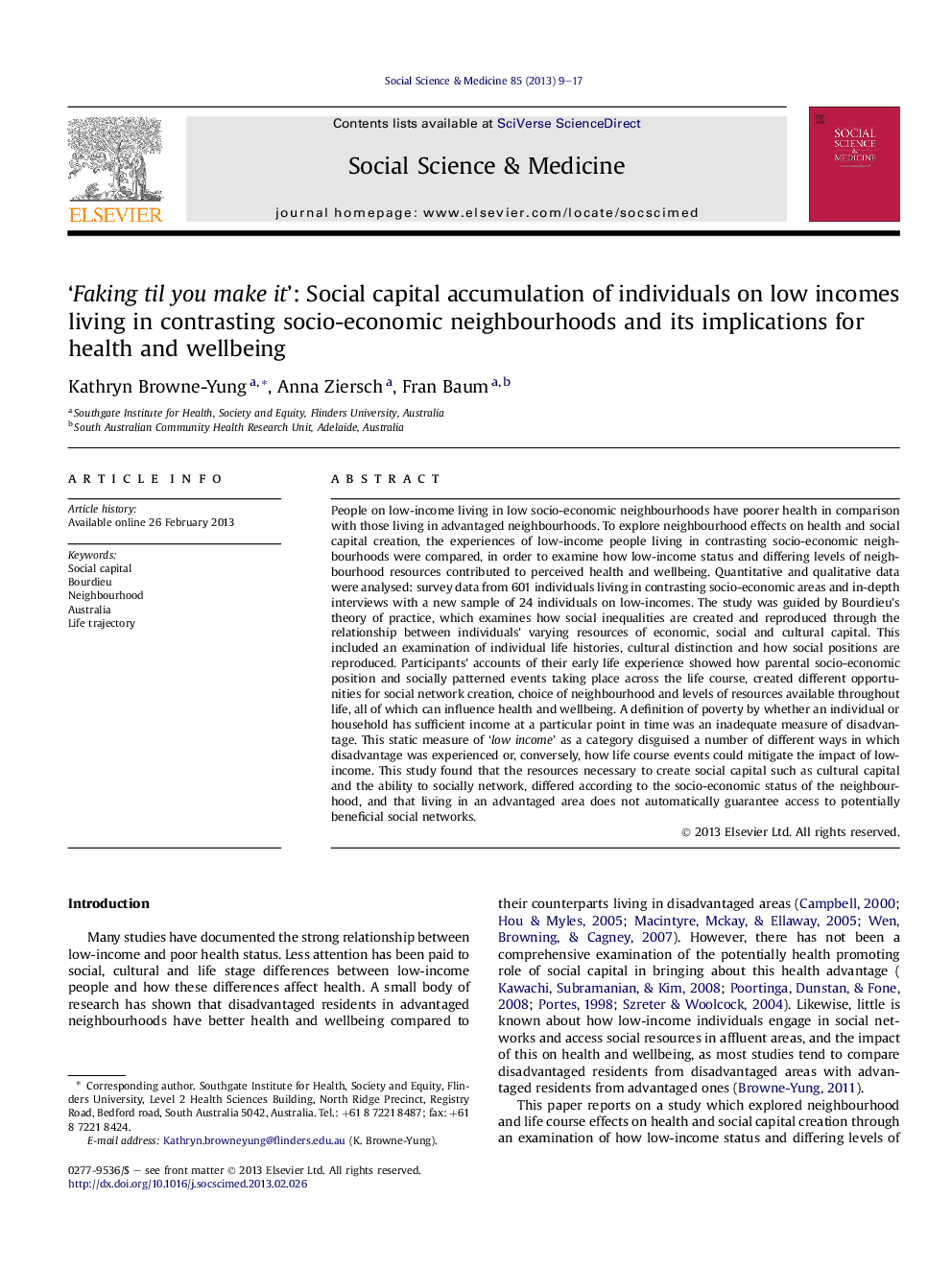| Article ID | Journal | Published Year | Pages | File Type |
|---|---|---|---|---|
| 952309 | Social Science & Medicine | 2013 | 9 Pages |
People on low-income living in low socio-economic neighbourhoods have poorer health in comparison with those living in advantaged neighbourhoods. To explore neighbourhood effects on health and social capital creation, the experiences of low-income people living in contrasting socio-economic neighbourhoods were compared, in order to examine how low-income status and differing levels of neighbourhood resources contributed to perceived health and wellbeing. Quantitative and qualitative data were analysed: survey data from 601 individuals living in contrasting socio-economic areas and in-depth interviews with a new sample of 24 individuals on low-incomes. The study was guided by Bourdieu's theory of practice, which examines how social inequalities are created and reproduced through the relationship between individuals' varying resources of economic, social and cultural capital. This included an examination of individual life histories, cultural distinction and how social positions are reproduced. Participants' accounts of their early life experience showed how parental socio-economic position and socially patterned events taking place across the life course, created different opportunities for social network creation, choice of neighbourhood and levels of resources available throughout life, all of which can influence health and wellbeing. A definition of poverty by whether an individual or household has sufficient income at a particular point in time was an inadequate measure of disadvantage. This static measure of ‘low income’ as a category disguised a number of different ways in which disadvantage was experienced or, conversely, how life course events could mitigate the impact of low-income. This study found that the resources necessary to create social capital such as cultural capital and the ability to socially network, differed according to the socio-economic status of the neighbourhood, and that living in an advantaged area does not automatically guarantee access to potentially beneficial social networks.
► Survey and in-depth interview data were used to compare individuals on low incomes living in contrasting socio-economic areas. ► There were demographic and life course trajectory differences between low income individuals in the two areas. ► The demographic and life course differences affected the ability of individuals to create social capital. ► Contrasting socio-economic areas offered different opportunities for social capital creation. ► Social capital was associated with stocks of economic and cultural resources and influenced by neighbourhood environments.
